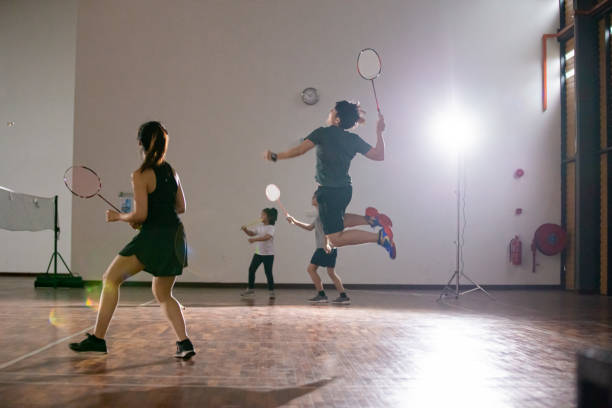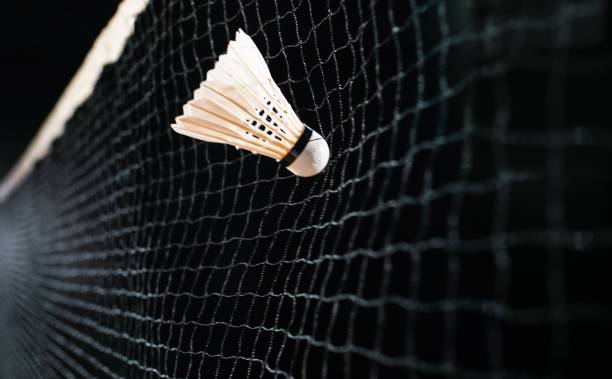Badminton is a fast-paced and exciting sport enjoyed by millions around the world. Central to this game is the badminton net, a crucial component that determines the quality and fairness of the game. Whether you’re setting up a net for casual play in your backyard or for competitive matches in a professional setting, understanding the key aspects of badminton nets can greatly enhance your playing experience. This guide will delve into the different types of badminton nets available, their features, and how to select the right one for your needs.
Types of Badminton Nets
Outdoor vs. Indoor Badminton Nets
When choosing a badminton net, one of the primary considerations is whether it will be used indoors or outdoors. Outdoor badminton nets are designed to withstand various weather conditions, such as rain and wind. They are typically made from durable materials like polyethylene or nylon, which are resistant to environmental wear and tear. These nets often feature reinforced edges and a strong, weather-resistant mesh to ensure longevity and maintain their shape.
On the other hand, indoor badminton nets are usually constructed from lighter materials, like cotton or synthetic fibers. They are designed for optimal performance in controlled environments and are not built to handle the elements. Indoor nets are often used in gyms, sports complexes, and recreational centers where the playing conditions are consistent and protected from the weather.

Regulation vs. Recreational Badminton Nets
Badminton nets come in different sizes and specifications, particularly when comparing regulation nets to recreational ones. Regulation badminton nets adhere to the official measurements set by the Badminton World Federation (BWF). These nets are 5 feet tall at the center and 5 feet 1 inch tall at the ends, spanning across a width of 20 feet for standard doubles play. They are meticulously manufactured to ensure they meet competitive standards, offering the correct height, tension, and overall quality.
Recreational badminton nets, in contrast, are often more flexible in terms of size and materials. These nets are suitable for casual play and can be adjusted for various setups. While they may not adhere strictly to official measurements, they are designed to provide a satisfactory playing experience for casual players and families.
Features to Consider in a Badminton Net
Material Quality
The material used in a badminton net significantly impacts its durability and performance. High-quality nets are typically made from synthetic materials like nylon or polyethylene, which offer strength and resistance to stretching. These materials ensure that the net maintains its shape and tension even after extensive use. Cheaper nets may use less durable materials, which can affect the net’s performance and lifespan.
Mesh Size and Construction
The mesh size of a badminton net determines how well it performs during play. A net with a fine mesh ensures that the shuttlecock passes through smoothly without getting caught, which is essential for maintaining the flow of the game. Additionally, the construction of the mesh should be tight and even, with no loose threads or gaps that could interfere with gameplay.
Height Adjustment and Stability
Some badminton nets come with height adjustment features, which can be particularly useful for recreational setups where players of different skill levels might be involved. These adjustable nets allow you to modify the height to suit various playing conditions or preferences. Stability is also crucial, as a well-designed net should stay in place during play and not sag or shift, which could disrupt the game.
Installing and Maintaining Your Badminton Net
Setting Up Your Net

Proper installation of a badminton net is essential for ensuring a good playing experience. For outdoor nets, secure the net using sturdy poles and anchors to keep it stable in various weather conditions. Ensure that the net is tensioned correctly and that it meets the appropriate height requirements for your intended use.
For indoor nets, you can use a net stand or attach the net to existing fixtures. Make sure the net is taut and evenly spaced across the width of the court. Regularly check the net’s tension and adjust as needed to maintain optimal playing conditions.
Maintenance Tips
Maintaining your badminton net will extend its lifespan and ensure consistent performance. For outdoor nets, regularly inspect the net for signs of wear or damage and clean it to remove dirt and debris. If the net becomes tangled or knotted, gently untangle it to prevent damage. Store the net in a dry place when not in use to prevent mildew and deterioration.
Indoor nets should also be checked periodically for any signs of damage or wear. Clean the net with a mild detergent and water, and avoid using harsh chemicals that could damage the fibers. Proper care will help keep the net in good condition and ready for play.
Conclusion
Selecting the right badminton net involves understanding the different types available and their specific features. Whether you’re opting for an outdoor or indoor net, regulation or recreational, focusing on material quality, mesh size, and height adjustment can enhance your playing experience. Proper installation and maintenance are also key to ensuring the longevity and performance of your net. By considering these factors, you can make an informed choice and enjoy many exciting games of badminton.
FAQs
Q: What is the standard height of a badminton net?
The standard height of a badminton net is 5 feet (1.524 meters) at the center and 5 feet 1 inch (1.55 meters) at the ends. This measurement ensures that the net conforms to official regulations for competitive play.
Q: Can I use an indoor badminton net for outdoor play?
While you can use an indoor badminton net for outdoor play, it is not recommended. Indoor nets are typically made from lighter materials and are not designed to withstand outdoor conditions such as wind and rain. For outdoor play, it is better to use a net specifically designed to endure the elements.




